Disclosure: This article contains affiliate links. We may earn a commission from purchases at no extra cost to you, which helps our travel content.
The first time I rolled into Cape May, I was tracking minor league prospects with my brother through the Northeast. What was supposed to be a quick stopover became a three-day deep dive into what I can only describe as America's most perfectly preserved Victorian seaside town. Now, after seven return visits documenting its architectural evolution, I've crafted this walking tour to help couples experience what feels like stepping through a time portal to the 1890s—complete with gingerbread trim, vibrant colors, and ocean breezes that haven't changed in over a century.
Before You Begin: Getting Oriented in Cape May
Cape May sits at New Jersey's southernmost tip, where the Atlantic Ocean meets Delaware Bay. The town's Historic District covers about 380 acres with over 600 Victorian structures—the highest concentration in America.
Start your exploration at the Cape May Welcome Center on Lafayette Street, where you can pick up a detailed map. While smartphone navigation works fine, I've found having a physical map helps you spot architectural details that might otherwise escape notice. Speaking of which, a good pair of polarized sunglasses will help you appreciate the intricate architectural details without squinting into the coastal glare. The Welcome Center also offers restrooms and water bottle refill stations—crucial for a day of walking.
If you're visiting during peak season (Memorial Day through Labor Day), arrive early. The streets get crowded by mid-morning, especially on weekends. I typically start my walks by 8:00 AM to capture the magical morning light on those candy-colored facades without dodging other tourists.
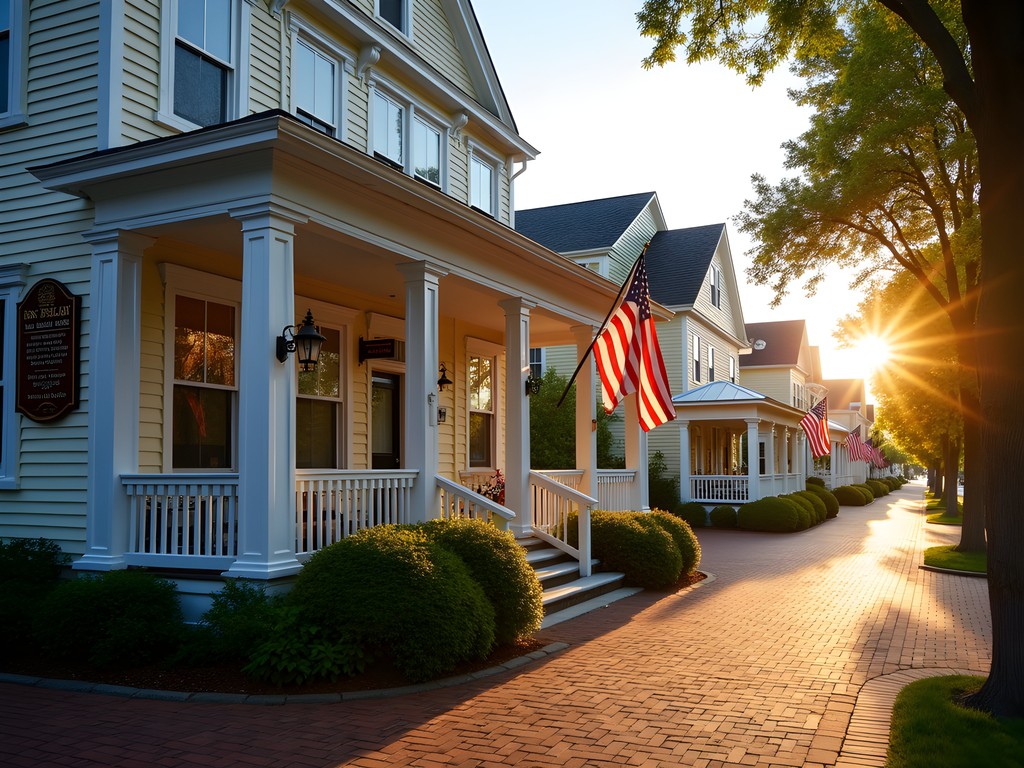
💡 Pro Tips
- Download the Cape May Historic District audio tour app before arriving for narrated guidance
- Wear comfortable walking shoes with good support—Victorian-era streets weren't designed for modern footwear
- Carry a reusable water bottle—the sea air is deceptively dehydrating
The Victorian Heart: Washington Street Mall & Surrounding Gems
Begin your walk at Washington Street Mall, a pedestrian-friendly shopping district that serves as the town's commercial heart. While modern businesses occupy these spaces, most buildings retain their 19th-century charm. Take note of the ornate cornices and decorative woodwork—details I've spent hours capturing on video for my architectural preservation project.
From the mall, head east on Hughes Street toward the ocean, where you'll encounter some of Cape May's most photographed structures. The Humphrey Hughes House (2 Hughes Street) exemplifies the Carpenter Gothic style with its elaborate trim that reminds me of the delicate precision required in my lab work—except these artisans worked with wood instead of microscopes.
As you walk, you'll notice many homes feature plaques with construction dates and original owners. I recommend bringing a pocket monocular to read these historical markers without trespassing onto private property. This compact tool has proven invaluable during my documentation projects across America's historic districts.
Don't rush this section—the magic of Cape May is in the details. Those spindles, brackets, and finials tell stories about craftsmanship that's largely disappeared from modern construction.
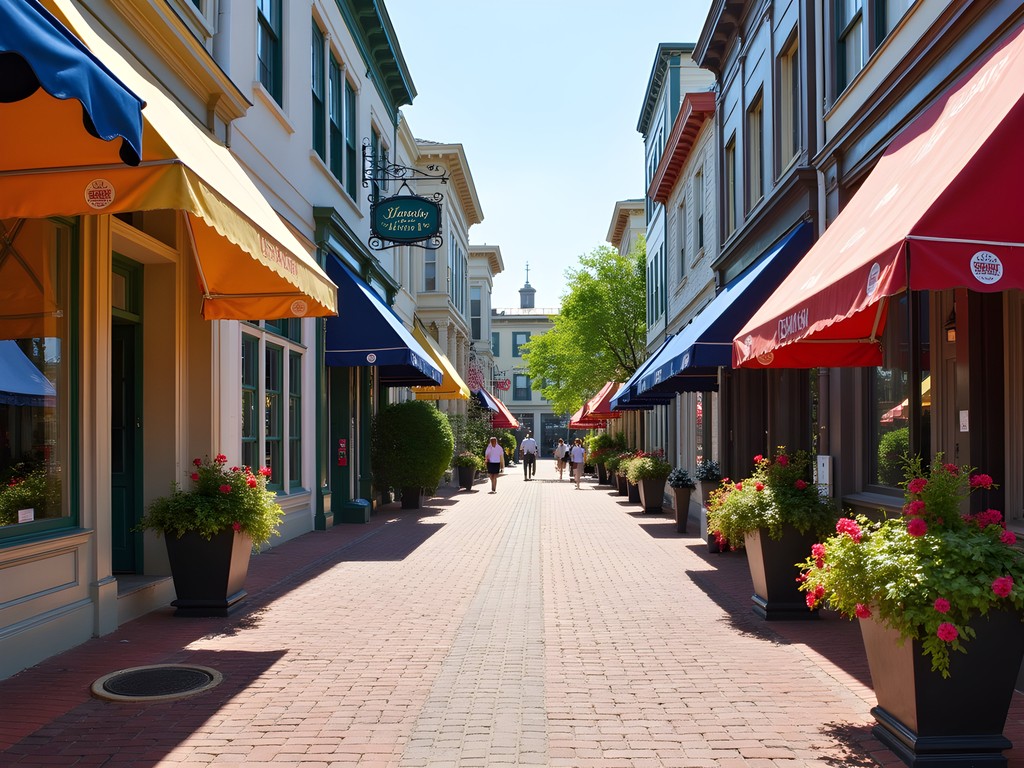
💡 Pro Tips
- Visit the Cape May Historic District information booth on the mall for specialized architectural guides
- Morning light (before 11 AM) provides the best conditions for photographing the eastern-facing Victorian facades
- Many businesses in the mall offer historic photos of their buildings—just ask!
The Grandest Dames: Cape May's Iconic Victorian Hotels
No visit to Cape May is complete without exploring its historic hotels—living museums where you can actually spend the night. Congress Hall stands as the crown jewel, America's oldest seaside resort dating back to 1816 (though rebuilt in its current form after an 1878 fire). The distinctive yellow facade with its columned veranda has witnessed presidential visits and society gatherings for over two centuries.
I spent a memorable spring weekend documenting Congress Hall's architectural elements for my video series on American historic hotels. The staff graciously allowed me access to areas normally off-limits to visitors, revealing original woodwork and fixtures that survived multiple renovations.
Nearby, the Chalfonte Hotel (built 1876) offers another spectacular example of Victorian resort architecture. Its distinctive white wooden construction features wrap-around verandas that catch the ocean breeze—a natural cooling system predating air conditioning by decades.
While touring these grand buildings, I recommend using a pocket notebook to jot down architectural details that catch your eye. I've filled dozens of these during my preservation travels, and they've become invaluable reference materials for my video projects. For those staying overnight, splurge on a room with period furnishings—the experience of waking up in a Victorian chamber is worth every penny.
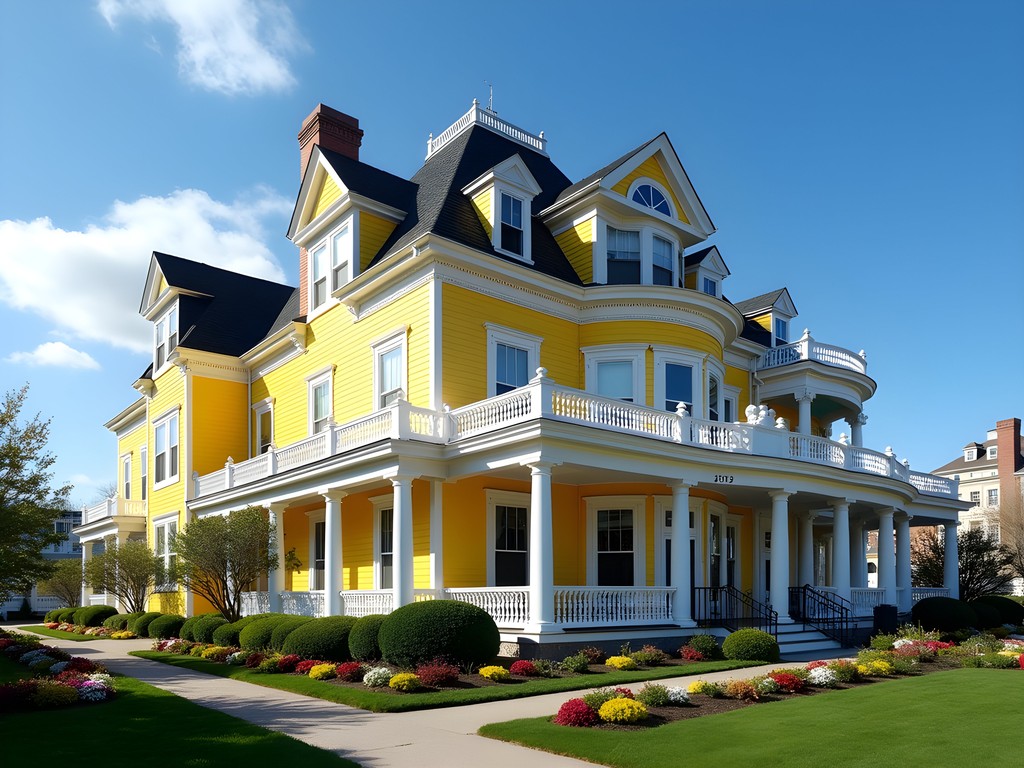
💡 Pro Tips
- Even if not staying as a guest, most historic hotels allow visitors to explore public areas—just be respectful of current guests
- Congress Hall offers historical tours Tuesday through Thursday at 10:00 AM
- Request a room on the upper floors of historic hotels for better views and typically more authentic historical details
Beachfront Beauties: Ocean Drive & The Promenade
After exploring the town center, make your way to Beach Avenue for a striking contrast between Victorian opulence and natural beauty. The promenade offers unobstructed ocean views alongside some of Cape May's most impressive structures.
The Angel of the Sea Bed & Breakfast (5 Trenton Avenue) exemplifies the quintessential Victorian beach mansion with its turrets, multiple porches, and elaborate trim painted in period-appropriate colors. During my first visit, I spent nearly an hour capturing its details on video, marveling at how the structure has weathered Atlantic storms for over 150 years.
As you stroll the promenade, you'll notice how many Victorian homes feature widow's walks—rooftop platforms originally used by sea captains' wives to watch for returning ships. For the best views of these architectural features, I recommend bringing a pair of compact binoculars which provide excellent magnification without the bulk of traditional models.
The beachfront walk also reveals how Cape May has balanced preservation with practical coastal considerations. Many historic structures have been subtly elevated or reinforced against flooding while maintaining period aesthetics—something I've documented extensively for my series on historic preservation in vulnerable coastal areas.
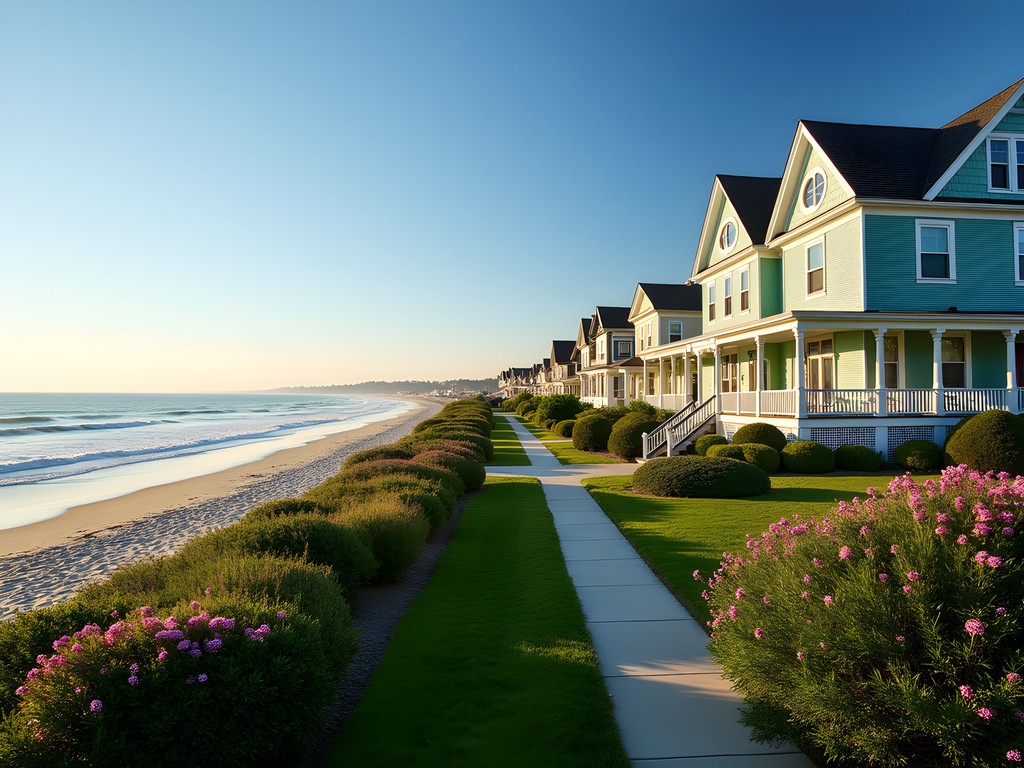
💡 Pro Tips
- The promenade is most peaceful at sunrise when you'll have it almost entirely to yourself
- Look for the informational plaques along Beach Avenue detailing the area's maritime history
- Many beachfront properties illuminate their Victorian details at night—worth a second evening stroll
Hidden Gems: Side Streets & Architectural Treasures
The true magic of Cape May reveals itself when you venture off the main thoroughfares onto quieter residential streets like Columbia Avenue, Gurney Street, and Jackson Street. Here, away from commercial areas, you'll find some of the most exquisite examples of Victorian domestic architecture in America.
During my documentation projects, I've discovered that homes along these side streets often retain more original features than their commercial counterparts, which have undergone more extensive renovations. Pay special attention to the porch railings, window surrounds, and decorative brackets—elements that showcase the craftsmanship of 19th-century artisans.
One tool I never explore Cape May without is my architectural guidebook, which provides historical context for different building styles. Understanding the difference between Gothic Revival, Second Empire, and Queen Anne styles transforms a pleasant walk into an educational experience.
For photography enthusiasts, these residential streets offer perfect lighting conditions in late afternoon, when the western sun illuminates facades with a golden glow. I use a folding reflector to capture details in shadowed porches and recessed architectural elements—a technique I developed while documenting baseball stadiums with challenging lighting conditions.
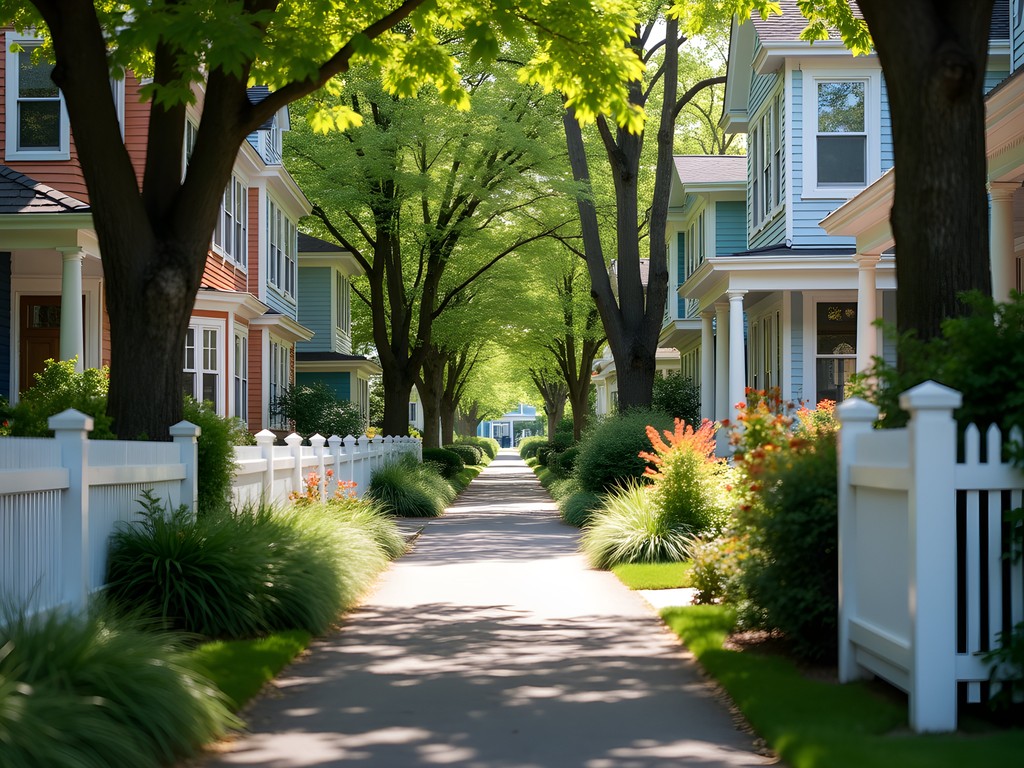
💡 Pro Tips
- Respect private property—many beautiful homes are still private residences
- Columbia Avenue contains excellent examples of Carpenter Gothic style homes with elaborate wooden trim
- Visit the Emlen Physick Estate (1048 Washington Street) for a complete Victorian house museum experience with guided tours
Final Thoughts
As someone who's spent years documenting America's vanishing architectural treasures, I can confidently say Cape May stands as our most complete Victorian town—a living museum where the past isn't cordoned off behind velvet ropes but integrated into daily life. What makes this seaside gem truly special is how preservation has become part of its identity rather than an afterthought.
Whether you're architectural enthusiasts, history buffs, or simply a couple seeking a romantic weekend, Cape May rewards those who slow down and look up. The details—from hand-carved wooden brackets to colorful stained glass transoms—tell stories of craftsmanship and artistic vision that have largely disappeared from modern construction.
I encourage you to experience this Victorian time capsule with the same sense of wonder that captivated me during my first unplanned visit years ago. Bring comfortable shoes, a curious mind, and plenty of storage on your camera. Cape May's architectural legacy deserves to be appreciated, documented, and preserved for future generations—one careful step and thoughtful photograph at a time.
✨ Key Takeaways
- Cape May contains America's largest collection of Victorian structures in a concentrated area
- Early mornings and weekdays offer the best experience with fewer crowds
- Side streets often contain more authentic and less commercialized Victorian architecture
- The town represents a successful balance of historic preservation and modern function
📋 Practical Information
Best Time to Visit
Spring (April-June) and Fall (September-October)
Budget Estimate
$150-300 per day for accommodations, meals, and activities
Recommended Duration
Minimum 2 days, ideally 3-4 days
Difficulty Level
Easy








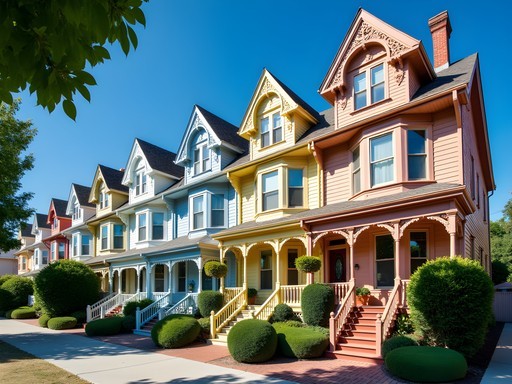







Comments
EastCoastExplorer
Is parking a nightmare in Cape May? Wondering if we should just Uber from our hotel outside town.
Lillian Diaz
I found street parking wasn't too bad in November, but I've heard summer is another story entirely. There's a great trolley system that runs through town if you're staying nearby!
TravelingTeacher
We just got back from Cape May yesterday and used this guide for our self-guided tour. The kids (10 & 12) were surprisingly into it - we turned it into a scavenger hunt for architectural features (how many turrets can you spot? Find a house with all these colors, etc). One suggestion to add: the Emlen Physick Estate tour is worth the money if you want to see inside one of these beauties. And don't miss sunset at Sunset Beach - not Victorian, but still a must-do!
FamilyTravelerX
Love the scavenger hunt idea! Did you create your own list or is there one available somewhere?
TravelingTeacher
Made our own! Just googled 'Victorian architecture features' and picked things that were easy to spot - bay windows, turrets, gingerbread trim, etc. The kids loved it!
HistoryBuff87
If you're doing this walking tour, I highly recommend picking up a paper map from the Welcome Center too. Cell reception can be spotty in some areas, and the free map has all the historic building dates listed. We used our compact binoculars to spot details on the higher floors of buildings across the street - those Victorian architects hid some amazing details up high!
Preston Kennedy
Great tip about looking up! Those corbels, finials and widow's walks are easily missed if you're just looking at street level.
beachbum99
Those gingerbread trim details are incredible! Your photos really capture the charm of Cape May.
BeachDayDreamer
Those pictures of Congress Hall are gorgeous! Definitely adding Cape May to my bucket list.
Lillian Diaz
Preston, this walking tour is EXACTLY what I needed last month when I spontaneously decided to escape Jersey City for the weekend! I followed your route almost exactly, but spent extra time around the Angel of the Sea B&B area - those gingerbread details are insane up close. One tip for fellow walkers: I started super early (7am) on Sunday morning and had those magical streets practically to myself for photos. By 10am, the day-trippers started arriving. Also, I discovered this tiny coffee shop called Magic Brain Cafe just off Washington Street Mall that made for a perfect mid-tour caffeine boost. Their outdoor seating was perfect for Victorian house-gazing while resting my feet!
VictorianLover55
Magic Brain Cafe is my favorite spot too! Did you try their lavender latte?
Lillian Diaz
Yes! That lavender latte was incredible. Perfect complement to all that Victorian eye candy!
escapeblogger
This looks amazing! We're thinking about going to Cape May in October. Is that a good time to do this walking tour or is it too cold by then?
Preston Kennedy
October is actually perfect! The summer crowds are gone, temperatures are mild (usually 60s-70s), and the Victorian architecture looks stunning against the fall colors. Plus, many B&Bs offer shoulder season rates.
escapeblogger
That's great to hear! Booking our trip now. Thanks!
cityseeker
Is it better to do this self-guided tour or pay for one of the official tours? Anyone tried both?
wanderlustclimber
We did both! This self-guided tour is perfect for seeing the exteriors at your own pace. The paid tour through the Mid-Atlantic Center for the Arts gets you inside some of the houses, which was cool to see the interiors. If you're on a budget though, this free walking tour is excellent on its own.
Bryce Diaz
Preston, you've captured the essence of Cape May beautifully. I've been photographing America's historic districts for years, and Cape May remains my gold standard for Victorian preservation. I'd add one tip for photography enthusiasts: early morning light (6-8am) creates stunning shadows across the gingerbread trim details, while sunset gives the colorful houses a warm glow that's impossible to resist. I spent three days there with my travel tripod getting shots of the architectural details. The locals are also incredibly knowledgeable - strike up a conversation with shop owners for hidden gem recommendations!
starguide
Do you need a car to do this walking tour or is everything close together?
Preston Kennedy
Everything in this guide is within walking distance! Cape May's historic district is quite compact. Once you're there, you can park your car and forget about it for the day.
Venture X
Premium card with 2X miles, $300 travel credit, Priority Pass